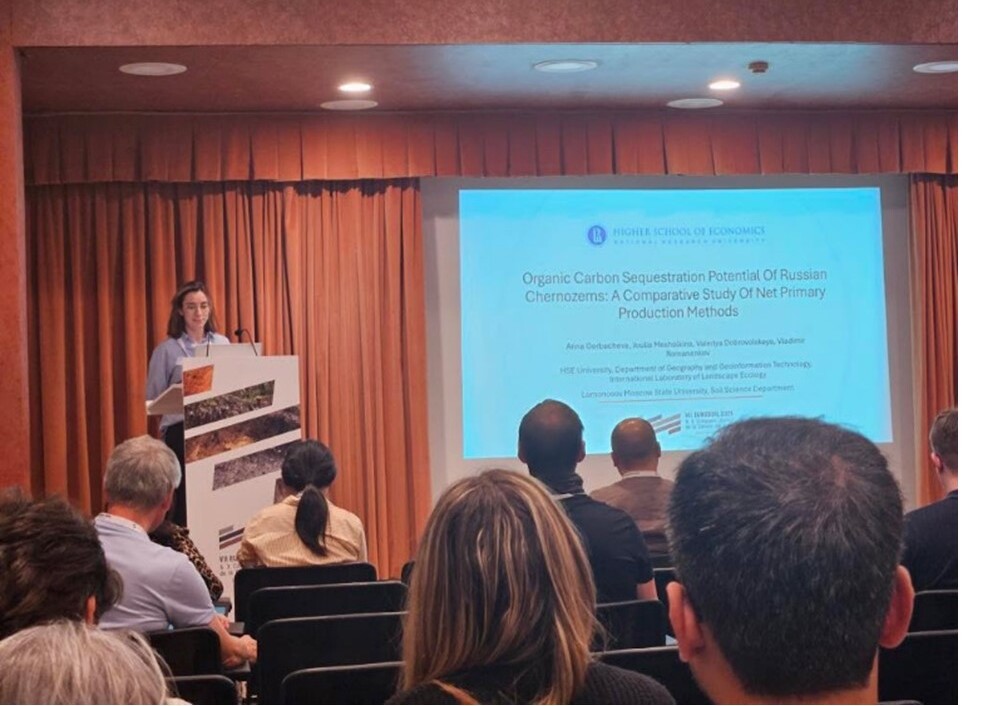International Laboratory of Landscape Ecology Presents Findings at EUROSOIL2025
From 8 to 12 September 2025, the 7th EUROSOIL Congress took place in Seville, Spain, bringing together more than 1,000 soil scientists from 63 countries under the topic “Advancing Soil Knowledge for a Sustainable Future.” The congress opened with a series of keynote lectures by leading global experts. Nobel Peace Prize laureate Professor Rattan Lal highlighted the pivotal role of soil in the 21st century; Panos Panagos (Joint Research Centre, European Commission) discussed challenges and opportunities for soil science and policy as well as presented the new Soil Monitoring and Resilience Law; Claire Chenu (INRAE) delivered a lecture on soil carbon science for EU policy. Heike Knicker explored the biochemical effects of biochar; Manuel Delgado-Baquerizo spoke about soil biodiversity under global change; Laura B. Reyes Sánchez addressed soil science education; and Peter Schad discussed the future of international soil classification.

At EUROSOIL 2025, Anna Gorbacheva presented the results of the research on the potential of soil organic carbon sequestration in arable Chernozems during the largest session by number of presentations — “Soil Carbon Dynamics and Stabilization.” Carbon emerged as a unifying theme of the entire congress. The session explored how soils — the planet’s largest terrestrial carbon reservoir — can serve as a tool for long-term carbon storage and achieving climate neutrality. Researchers shared field and modeling data on sequestration mechanisms, the role of microbial and plant interactions, and the impact of land use and agricultural practices on sustainable carbon accumulation. Particular attention was given to increasing organic carbon stocks in agricultural soils, enhancing their resilience to extreme weather, and linking soil management to the “4 per 1000” initiative and international climate goals.
Another central theme of EUROSOIL 2025 was the concept of “soil security,” introduced by Professor Alex McBratney and echoed throughout the conference. While “soil health” describes the soil’s ability to function as a living ecosystem that sustains life and provides vital ecosystem services, “soil security” is a broader concept that encompasses the conservation and improvement of soil resources to sustainably meet human and environmental needs in the future. Soil security integrates biophysical indicators with socio-economic and regulatory dimensions, recognizing that soil protection requires not only improving its physical and chemical properties but also understanding societal values, governance mechanisms, and the interconnections between land uses.
Other congress tracks covered topics such as soil genesis and digital soil mapping, biogeochemistry and greenhouse gas fluxes, soil biodiversity and microbiomes, soil pollution and remediation, as well as the challenges of urban, anthropogenic, and degraded soils and issues of soil science education. All sessions emphasized the interconnectedness of soil functions and their direct relevance for policy, agriculture, and ecosystem restoration.
